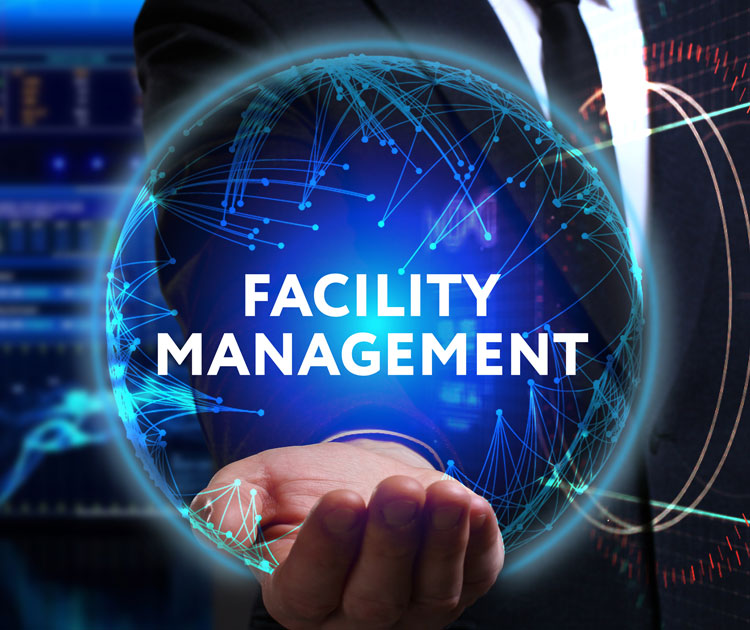Top Benefits of Total Facility Management for Streamlined Workflow
Total Facility Management (TFM) stands for a calculated method to boosting functional effectiveness by incorporating different solutions, such as maintenance and security, under a unified management structure. The question stays: what details advantages can companies harness from adopting TFM, and exactly how might these benefits transform their functional landscape?
Boosted Operational Performance
Enhanced functional efficiency is a main advantage of executing total facility management (TFM) methods. TFM incorporates an extensive strategy to managing a facility's sources, processes, and facilities, inevitably streamlining operations. By settling various services-- such as upkeep, area, protection, and cleansing management-- TFM minimizes redundancies and enhances sychronisation amongst various functional functions.
The assimilation of modern technology further enhances this effectiveness. Advanced facility management systems offer real-time data analytics, allowing facility managers to make educated decisions that enhance process and resource allotment. Anticipating upkeep strategies, as an example, prepare for tools failings before they happen, lowering downtime and expanding possession life expectancy.
Additionally, TFM advertises standard processes across various departments, ensuring consistency and top quality in solution distribution. This uniformity reduces operational disturbances and cultivates a much more collective working environment. Therefore, employees can concentrate on their core duties, driving efficiency and improving overall efficiency.

Price Reduction and Financial Savings
Executing total facility management (TFM) not just increases functional effectiveness yet also substantially adds to cost decrease and savings. By combining various services under a solitary management structure, organizations can remove redundancies and streamline procedures, thereby reducing functional prices. TFM enables much better procurement methods, allowing business to discuss bulk buying contracts with providers and company, causing lower prices.
Moreover, TFM emphasizes precautionary upkeep, which minimizes unforeseen breakdowns and extends the life-span of vital tools. This aggressive approach not just lowers repair work costs however additionally improves the dependability of facilitiess, guaranteeing uninterrupted operations. In addition, energy effectiveness efforts, frequently an essential focus of TFM, bring about significant cost savings on energy expenses, as facilitiess are maximized for lowered energy consumption.
Improved Source Management
Reliable resource management is a keystone of total facility management (TFM), enabling companies to maximize the use of their properties and workforce. By carrying out TFM approaches, companies can thoroughly assess their source allotment, ensuring that every possession is utilized successfully and efficiently. This holistic method enables the recognition of underperforming resources and the possibility for reallocation or enhancement.
On top of that, TFM facilitates the assimilation of technology for real-time monitoring of sources, which helps in predicting maintenance requirements and avoiding pricey downtime. By leveraging data analytics, organizations can make informed choices concerning the original source resource release, eventually improving performance and lowering waste.
In addition, TFM promotes a culture of continual improvement, encouraging groups to routinely evaluate and fine-tune their source management methods. Total Facility Management. This aggressive stance not just reduces operational interruptions yet additionally fosters development, as workers are empowered to recommend enhancements based on their firsthand experiences with source utilization
Streamlined Communication Channels
In total facility management, streamlined interaction channels play an important role in cultivating collaboration and performance throughout groups. Effective interaction guarantees that all stakeholders, consisting of facility managers, upkeep team, and service companies, are straightened with operational demands and business objectives. By developing clear lines of communication, teams can swiftly attend to concerns, share updates, and execute options, consequently lessening downtime and boosting efficiency.
With systematized communication systems, details is easily accessible, permitting Web Site real-time updates on maintenance requests, source allotment, and project timelines. This transparency not just lowers misconceptions but additionally equips workers to make informed choices rapidly. In addition, streamlined interaction facilitates much better coordination throughout emergencies, making sure that all workers are notified and can respond immediately.

Increased Focus on Core Activities
An my blog essential benefit of total facility management is the enhanced focus on core activities, allowing organizations to concentrate on their key organization objectives - Total Facility Management. By contracting out non-core functions such as safety and security, maintenance, and cleaning, companies can redirect their resources and energy towards calculated initiatives that straight add to their affordable benefit and development
Total facility management integrates various functional tasks under a solitary umbrella, promoting performance and lessening redundancy. This loan consolidation not only simplifies processes however likewise boosts responsibility, ensuring that every facet of the facility runs sympathetically without drawing away interest from what really matters-- core business features.
Furthermore, this strategy enables staff members to dedicate their time and efforts to tasks that drive innovation and enhance consumer complete satisfaction, instead than obtaining bogged down by operational obstacles. With a dependable facility management companion dealing with everyday operations, companies can attain higher agility, respond swiftly to market modifications, and keep a sharper concentrate on their objective.
Ultimately, enhanced concentrate on core tasks leads to improved overall performance, permitting organizations to enhance their market position and fulfill their critical objectives better. - Total Facility Management
Final Thought
In conclusion, Total Facility Management dramatically boosts operational performance by consolidating important services and leveraging information analytics for informed decision-making. Expense reductions and boosted source management contribute to overall financial savings, while streamlined interaction networks foster partnership amongst stakeholders.
Total Facility Management (TFM) represents a tactical strategy to improving functional performance by integrating numerous solutions, such as maintenance and protection, under a unified management structure.Enhanced operational efficiency is a primary advantage of applying total facility management (TFM) strategies. Advanced facility management systems offer real-time information analytics, making it possible for facility managers to make informed choices that enhance operations and source appropriation.Implementing total facility management (TFM) not only increases operational efficiency however likewise significantly adds to cost decrease and cost savings.Efficient resource management is a keystone of total facility management (TFM), allowing companies to optimize the usage of their assets and labor force.